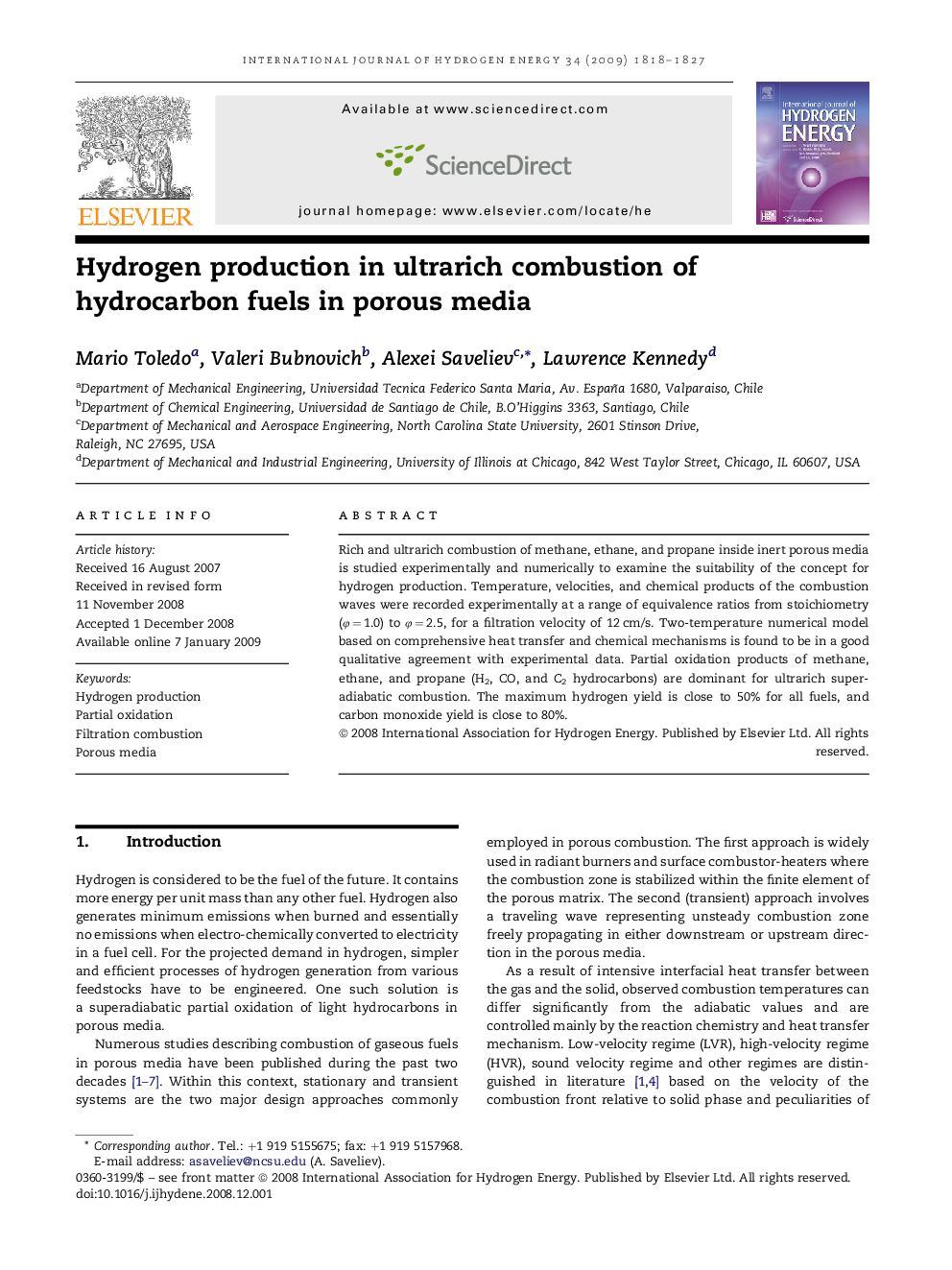| Article ID | Journal | Published Year | Pages | File Type |
|---|---|---|---|---|
| 1274302 | International Journal of Hydrogen Energy | 2009 | 10 Pages |
Rich and ultrarich combustion of methane, ethane, and propane inside inert porous media is studied experimentally and numerically to examine the suitability of the concept for hydrogen production. Temperature, velocities, and chemical products of the combustion waves were recorded experimentally at a range of equivalence ratios from stoichiometry (φ = 1.0) to φ = 2.5, for a filtration velocity of 12 cm/s. Two-temperature numerical model based on comprehensive heat transfer and chemical mechanisms is found to be in a good qualitative agreement with experimental data. Partial oxidation products of methane, ethane, and propane (H2, CO, and C2 hydrocarbons) are dominant for ultrarich superadiabatic combustion. The maximum hydrogen yield is close to 50% for all fuels, and carbon monoxide yield is close to 80%.
